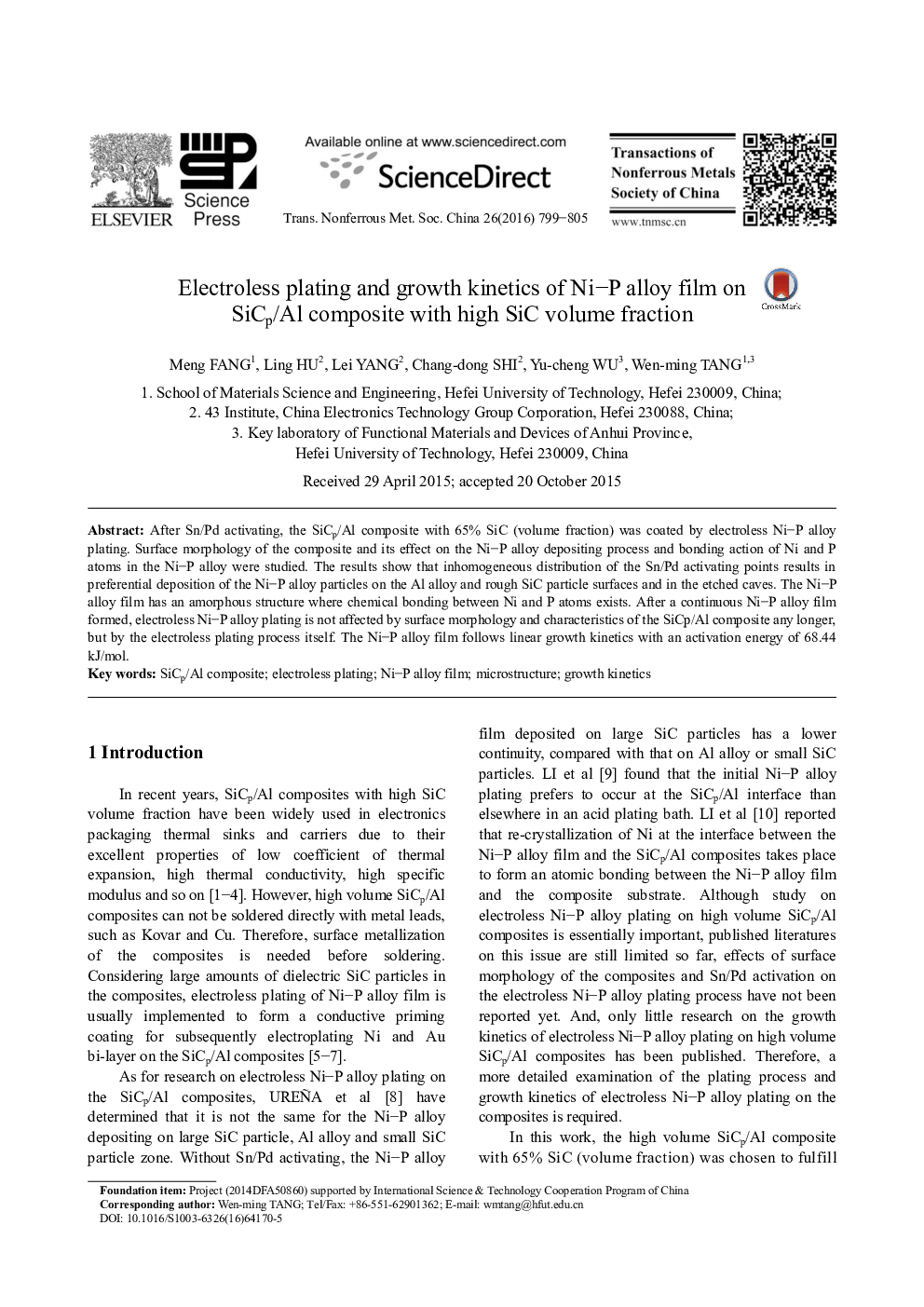| Article ID | Journal | Published Year | Pages | File Type |
|---|---|---|---|---|
| 1635757 | Transactions of Nonferrous Metals Society of China | 2016 | 7 Pages |
After Sn/Pd activating, the SiCp/Al composite with 65% SiC (volume fraction) was coated by electroless Ni–P alloy plating. Surface morphology of the composite and its effect on the Ni–P alloy depositing process and bonding action of Ni and P atoms in the Ni–P alloy were studied. The results show that inhomogeneous distribution of the Sn/Pd activating points results in preferential deposition of the Ni–P alloy particles on the Al alloy and rough SiC particle surfaces and in the etched caves. The Ni–P alloy film has an amorphous structure where chemical bonding between Ni and P atoms exists. After a continuous Ni–P alloy film formed, electroless Ni–P alloy plating is not affected by surface morphology and characteristics of the SiCp/Al composite any longer, but by the electroless plating process itself. The Ni–P alloy film follows linear growth kinetics with an activation energy of 68.44 kJ/mol.
